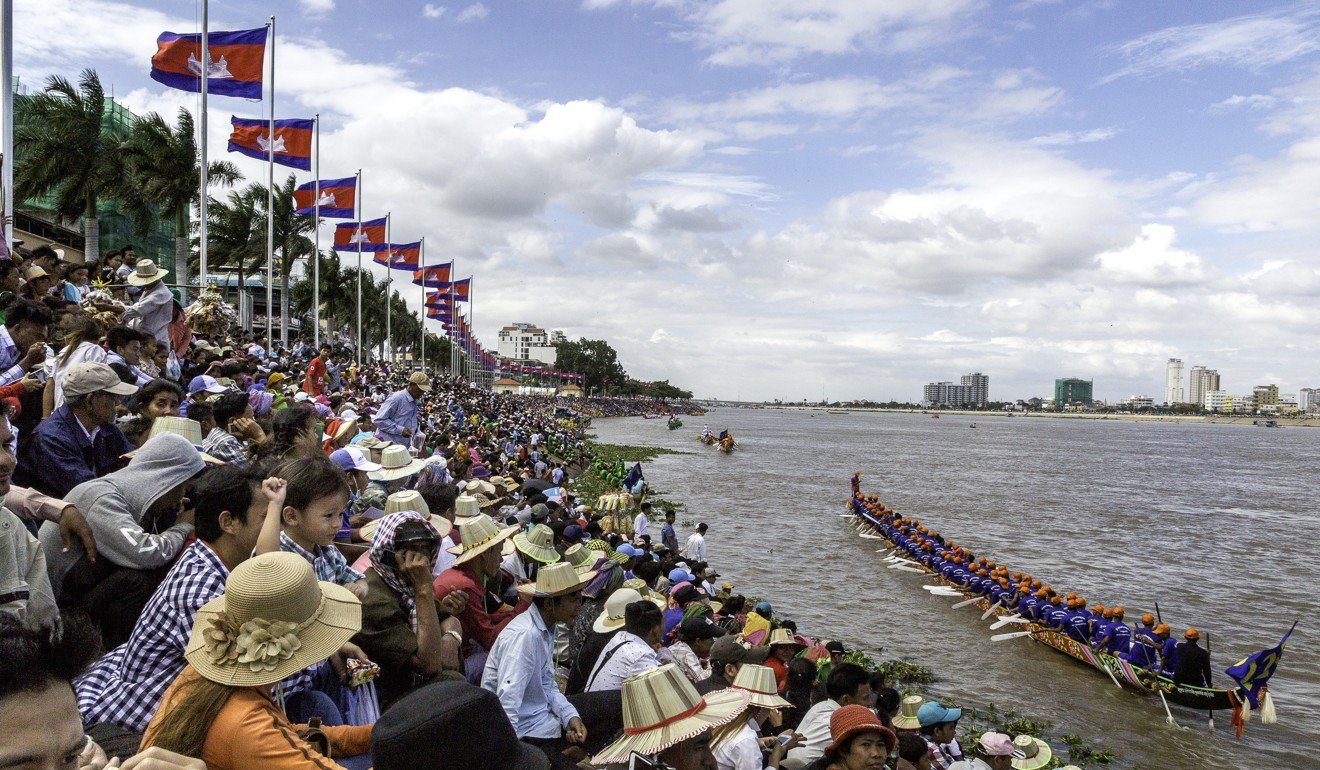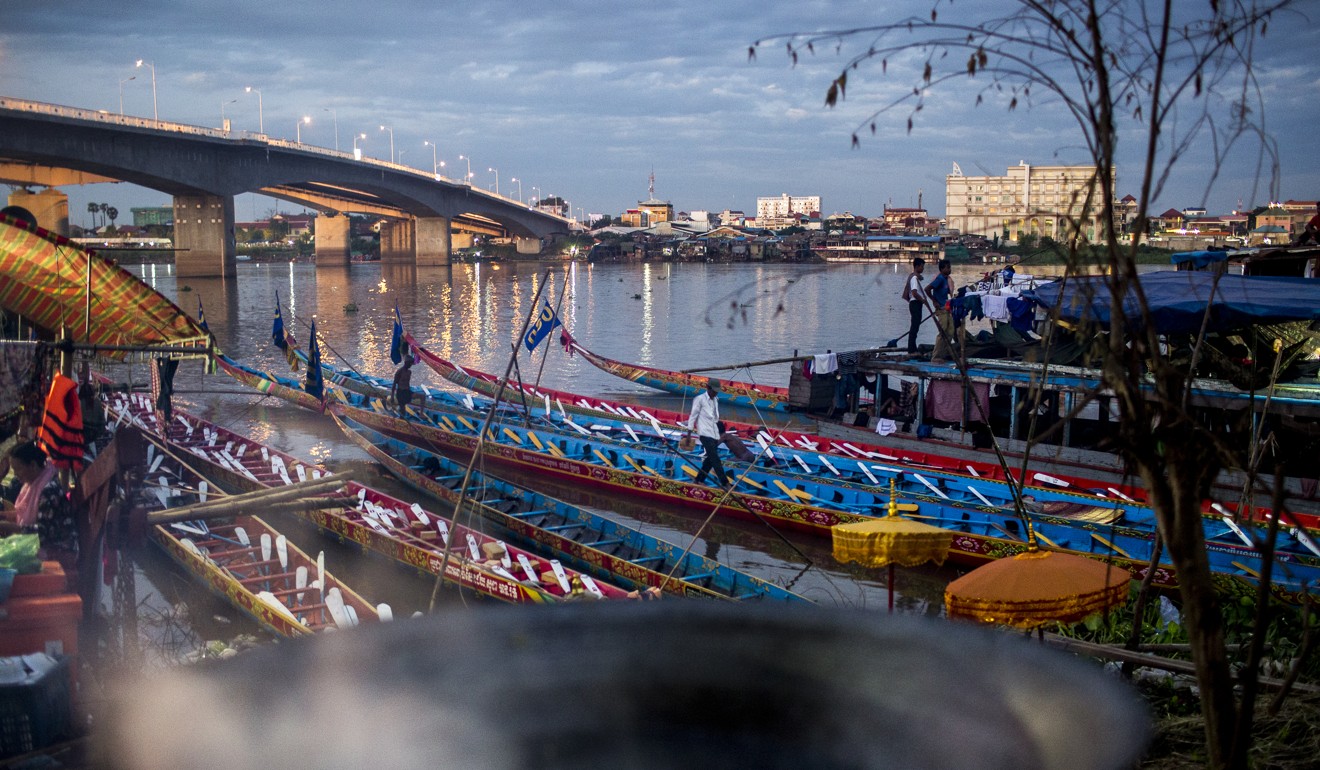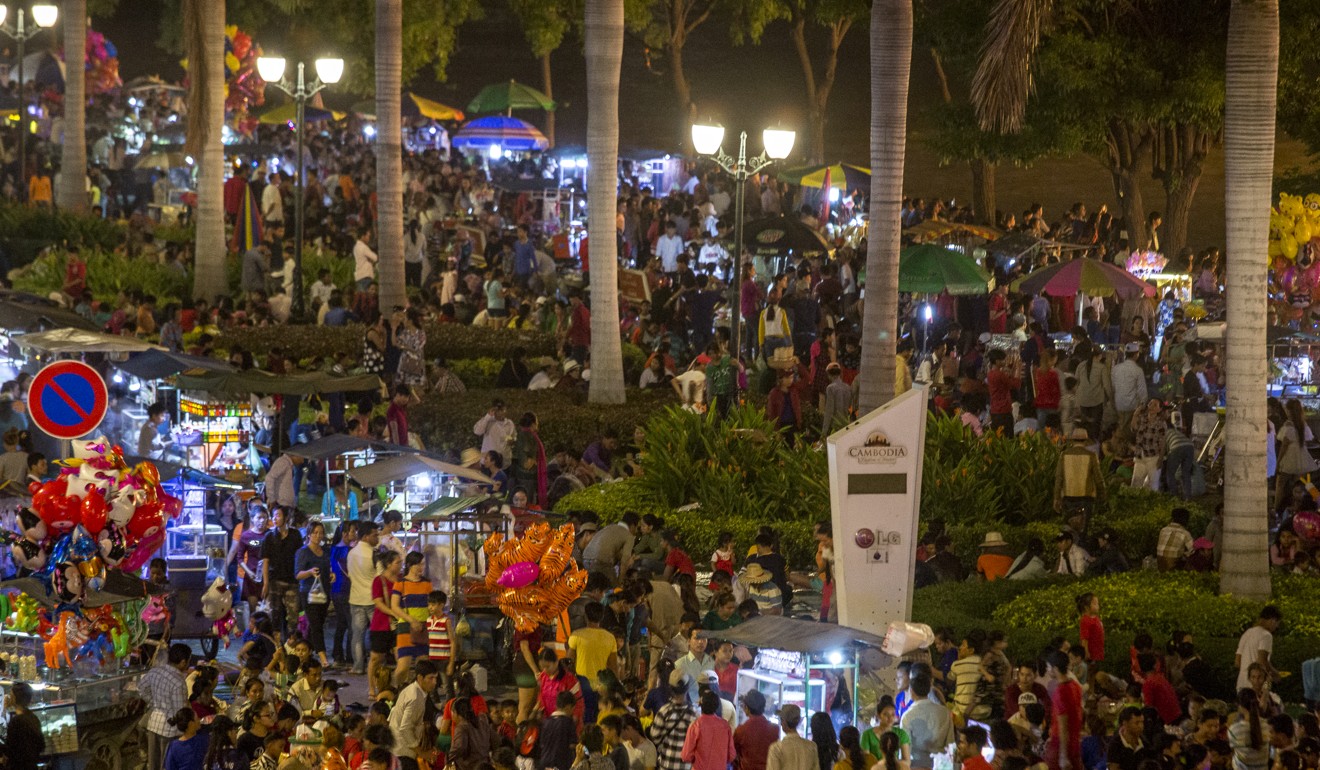
No, not Songkran – that other water festival, in Cambodia, and its thrills
Also known as Bon Om Touk, the annual event draws more than a million Cambodians from the provinces to the capital for three days of boat racing and other festivities
Cheers erupt from the thronging crowds that pack Phnom Penh’s riverside as the colourful slim wooden boats race down the Tonle Sap River.
A flash of reds, yellows, greens and blues glide along the water as the ornately-decorated longboats, powered by up to 80 men and women, pass by.
The best of Cambodia, whether you’re a backpacker or millionaire
Welcome to Cambodia’s Water Festival, or Bon Om Touk. The annual event, which takes place this year from November 21 to 23, is one of the country’s most treasured celebrations and draws more than one million Cambodians from the provinces to the capital for three days of festivities.
Also referred to as the Sun and Moon Festival, Bon Om Touk coincides with the full moon of the Buddhist month of Katdeuk. Heralding the end of the monsoon season and ringing in a new season of healthy crops and fish, the Water Festival is a time for serious celebration.

History
The Tonle Sap and Mekong rivers have long been the lifeblood of Cambodians. As well as providing fish to eat and water to feed crops and cattle, these waterways are where many a bloody battle was fought by the almighty naval forces of Angkorian kings – mainly against the indigenous Chams, throughout the 12th century.
The festival’s origins can be traced back to the 12th century, with etchings of some of King Jayavarman VII’s victories and boat racing parades etched on the walls of Bayon and Banteay Chhmar temples. The flotilla was also a way for the empire to flex its muscles, parading the strength of naval forces to the spying eyes of enemies.
Visit Kratie province in Cambodia: dolphins and rural retreats
The celebrations also mark another phenomenon unique to Cambodia – the changing direction of the Tonle Sap River. During monsoon season, heavy rains push the flow of the Mekong upstream along the Tonle Sap River to the Tonle Sap Lake, causing it to swell tenfold in some places.
Tragedy struck in 2010 when a stampede on a bridge rammed with festival-makers at Koh Pich took place. More than 340 people were killed and 750 were injured during the crush. This led to the festival being cancelled for three years. Since being restored, the annual event has seen more police patrolling the capital, as well as crowd control measures carried out.

What to expect
While small celebrations take place throughout Cambodia, the main event is in the capital where more than 400 boats compete for the top title. Another large event takes place in Siem Reap.
In Phnom Penh, the riverside is packed with people cheering for their favourites, with King Norodom Sihamoni putting in an obligatory appearance. Food stalls, free music concerts and fairgrounds and markets help the festive spirit linger after the races end.
As night falls, a parade of illuminated floats dance down the river under the shimmering light of the full moon. Floating candles and handmade boats from locals dot the water, and fireworks mark the end of each day’s events.

Traditions
The races are serious business for villages and preparations begin months ahead of the event. Craftsmen hand-carve the intricate details that adorn each boat before the splashes of colour are added. Teams take to the waterways to train, and communities pull their cash together to make the annual pilgrimage to the capital to watch their team compete.
But it’s not all about the boats. There are specific ceremonies carried out during Water Festival to pay respect to the land and river gods. The illuminated parade of floats that follows the boats forms part of Loy Pratip, which was historically a candlelit naval procession.
Sampeah Preah Khae sees locals carry out moon salutations and leave offerings in the hopes of securing a strong upcoming harvest, and auk ambok – a special delicacy of flattened rice made with banana or coconut – is devoured after midnight when Cambodians gather at temples to worship the moon.

How to make the most of Water Festival
Hotels fill up quickly and rates are marginally increased during this popular period. Finding transport can be tricky, so it bodes well to plan ahead by pre-booking buses and taxis. Large areas of the city are pedestrianised for the event, so check in to a hotel that is close to the action to make getting there easy.
If elbowing your way through the crowds on the riverside to find a good spot does not appeal to you, you can head to one of the many rooftop bars that line it. Le Moon, FCC and The Quay Boutique Hotel are popular places, offering prime views of the races. Reserve a table in advance.
Siem Reap’s festivities centre around Siem Reap River and attract fewer crowds than the capital’s main draw. Regardless of where you experience Water Festival, expect a celebratory air and a good helping of Cambodian hospitality.
The best of Cambodia, whether you’re a backpacker or millionaire
Getting there: several airlines, including Hong Kong Express and Cathay Dragon, operate direct flights daily from Hong Kong to Siem Reap and Phnom Penh.

